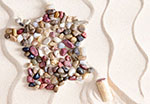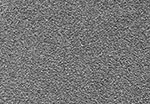
Silica sand
Silica Sand is one of the most abundant mines in the world. Silica sand is of high hardness. The silica ratios, chemical structures and hardness ratios vary according to the character structure and regions of the mines.
Silicone sands can be used wet and dry in industry. The usage areas of silica sands are very diverse. It is used as a raw material in many areas of the construction industry. In addition, silica sand is mainly used in filter sand, foundry sand and glass production. Silica sand is usually yellow, gray, beige and white. All colors and sizes are available, from 0-100 microns to 100-120 AFS to 10-15 AFS, from 50 microns to 1mm.
“They often ask what is the difference between silica sand and quartz sand. There is no difference between natural quartz sand and silica sand, except for non-crushed quartz sands. The qualities of silica sand increase or decrease according to the ratio of silicon dioxide and iron oxide in it.”
Silica Sand contains a minimum of 98% SIO2. Silicon and O2 are the most abundant elements on earth, and together they form Silica, one of three minerals found in rock form on earth. Silica exists in 3 main crystal forms. It is most commonly found in the form of the mineral Quartz. But this ore is also in the form of cristobolite and tridymite. These ores are very resistant to temperature and chemical effects. Because of this feature, it is always used in different branches of industries.
Areas of Use of Silica Sand :
Silica Sand is a mineral known for its versatile uses. Some of these are used in tile-ceramic Adhesives, Joint Mortars, Surface Hardeners, Glass Wool Production, Fiber Reinforced Precast Manufacturing, industrial paints, road signs sectors.
Advantage of Silica Sand :
Silica Sand has high abrasion, weather resistance and high chemical stability. Thanks to its color and chemical purity (min. 99% SIO2), Tuna silica sands enable the production of products with the desired performance in the construction industry.






Thank you very much for this valuable comment. Our aim is to be one of the pioneers of the Turkish Sand industry, and as one of the best sand producers like you, Atak Oyun Kumu is always at your service with all kinds of Sand in the mining and industrial sector with years of accumulated experience.